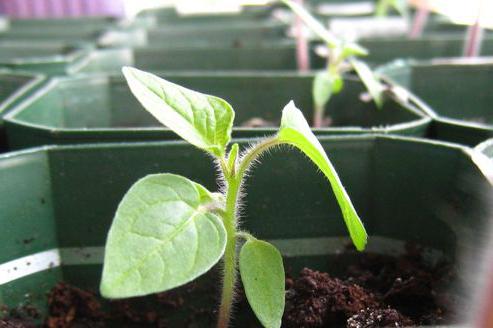Physalis - what is this? Physalis: cultivation, planting and care, varieties and cooking of vegetables from the Physalis
Physalis, the photo of which you probably did not seeonce, belongs to the family of solanaceous. There are only two edible species - fizalis vegetable and strawberry. The plant is also known as Peruvian gooseberry, strawberry tomato and earthen cherry, or cranberries. Physalis decorative is another kind of plant that can not be eaten, but when grown on a plot, it can be used as a decorative element when decorating dishes or for making bouquets. This article will tell you how to grow this useful and very original plant. Also in it there are several recipes for preparing a variety of dishes from the physalis.

Physalis, what is it: a berry or a vegetable?
Many gardeners who have just decidedget acquainted with physalis, do not know what kind of plant this plant should be: to berries or vegetables? After all, depending on which group he belongs to, care and cultivation will depend. What in fact is physalis? The plant on the biological structure refers to berries, but the majority of summer residents know it as a vegetable. But in fact, it is not so important what exactly is this wonderful product, because its beauty and benefit is much more important than all this. So, we figured out a generic accessory of the Physalis type. What does this plant represent in terms of decorativeness and nutritional value? About this we will talk a little later, and now we will get acquainted with the external data of the plant.
What does Physalis look like?
How to know what flower is offered to buy- This is exactly physalis? What is this plant and what features does it have? To begin with, it is worth remembering that in the form of a pot culture you can not buy so many varieties and types of physalis. The plant is quite large: berry species reach 60 cm in height and have a creeping stem, and vegetables grow up to one and a half meters. The leaves of most of the varieties of the physalis are oval, with slightly serrate margins. Flowers are small, pale yellow, with dark spots in the center, located at the base of young shoots. Even physically decorative can not boast of bright inflorescences. But yellow or bright orange fruits, hidden inside a bright flashlight, which is a pericarp, are remembered for a long time. Depending on the variety, the color of the boxes with the fruit inside can vary from pale yellow to bright red. Also there are varieties that differ in blue or other color berries.

Varieties of Physalis
The most common varieties of Physalisedible is considered Peruvian and raisin, which in the people are known as vegetable and berry. A large number of other varieties can also be bought in any store, but these two have become very popular with summer residents. Raisin Physalis, a photo of which you can see further, is small in size and liked by many growers for its compactness. It is this quality that makes it possible to grow it as a pot culture. Peruvian physalis - the plant is very large, so it is unlikely to grow it indoors. To harvest matured in the middle of summer, the raisin physalis must be planted 3-4 months before the expected collection time, and the Peruvian even earlier - for 5 months or more. Cultivated physiological method gives abundant harvests from the middle of July.
The size of the fizalis fruit is varied, this primarily depends on the variety:
- Berry varieties of physalis are always smaller than vegetable varieties. Thus, the fruit of strawberry fizalis reaches a weight of 6-10 g. Other berry varieties are even smaller, their weight is on the average 1-4 g.
- The most large-bodied among the vegetable varieties of physalis are the Moscow early (up to 80 g), Large-fruited (up to 90 g) and Gruntovy Gribovsky (up to 60 g).
- Decorative varieties of fizalis have the smallest fruits - up to 2 grams, but the size of the amniotic calyx is the largest of all varieties and species.

Planting physalis
What do you need to know when growing Physalis? That this plant is not so whimsical as it may seem at first glance. Despite the decorative and very unusual appearance for garden crops, physalis by the method of cultivation is similar to the usual and familiar for all tomatoes. The best place on the site for its successful growth and fruiting is chosen in the same way as for tomatoes. Physalis in relation to the amount of sunlight less fanciful than other nightshade. The scheme of landing physalis in the open ground depends on the type of the variety: for vegetable physalis fit 70x70, and for berry - 60x60 cm. In growing in greenhouses and in the presence of tapestry it is possible to arrange physalis according to the scheme of 50x70 cm (vegetable) or 30x70 ( berry). Planting sprouts physalis in the ground or a greenhouse is better in the same period as the tomatoes. Particular attention should be paid to watering: in the first week to moisten the soil should be abundant, making sure that it does not form a crust.

Care and formation of plants
During plant growth, it is important to monitor the cleanlinessbeds from weeds, after all, a close neighborhood with them can affect the development of the physalis bush. Earth cranberry or physalis does not need watering since the second half of summer, and is also not subject to a variety of diseases common to other nightshades. In the formation of a bush, the plant does not need much, since the more it branches, the greater the yield can be obtained from it. This was influenced by the place where the flowers are located. Physalis (his photo is presented in the review) should be regularly plucked for better branching.
Chemical composition of fruits
Surely many of the readers will be interested in that,What food value is peculiar to such a culture as physalis, that this plant is a food product? It is worthwhile immediately to pay attention to the fact that you can eat vegetables and berry fizalis in your food, and decorative is not enough for this because of the small size of berries and their low nutritional value. The fruits contain vitamins B (1, 2, 6 and 12), acids (malic, citric, amber and many others), antioxidants, polyphenols, tannin and glucose. Despite such a variety of nutrients, the caloric value of physalis is small and amounts to only 53 kcal per every 100 berries. This is what makes the fruits of this plant a wonderful vitamin and dietary product.

The Benefits and Harms of Physalis
Effect on the human body of the fruit of the plantdepends on how they eat physalis - raw or undergoing heat treatment. In the prepared form, the fruits of the physalis act as an excellent diuretic and choleretic agent, helping not only to reduce the risk of stones in the kidneys and gallbladder, but also to get rid of the already existing stones. In addition, the physalis has an easy analgesic, immunostimulating and anti-inflammatory effect. These properties of the product will be useful to those who have suffered a serious and long-lasting illness. Raw fruits of the physalis restore the normal functioning of the endocrine glands, and also contribute to recovery in hypertension, dysentery, gastrointestinal diseases and pyelonephritis.
The main contraindication to the use of physalis is the individual intolerance of the product.
Use of physalis in cooking
Physalis can be used for cookinga large number of different dishes: salads, hot and cold snacks, desserts, pickles and even wine. The main rule is always to remove the capsule from the fetus, because this part of the plant is poisonous. The greatest number of recipes with the use of physalis is reserved for the preparation of jam. The fact is that both vegetable and berry fizalis have a piquant taste, which is perfectly combined with many berries and fruits. In addition, the physalis in the jam is combined with zucchini, ginger and pumpkin.

In the first and second courses physalis in generalcan be used as decoration or main component. From it you can get excellent casseroles, soups and sauces. For the preparation of snacks, in particular salads, you can use both fresh berries of physalis, and salted and even wet fruits.
What to prepare with physalis?
Here are some simple recipes for preparing physalis at home.
- Compote from Physalis. For its preparation, you need well washed and cleaned from the "flashlights" fizalisa berries, sugar and water, a little citric acid, vanillin, as well as ginger to taste. First, you need to prepare a syrup, for which in equal proportions mix sugar and water and bring the mixture to a boil. Prepared in 5 minutes fisalis fruits cool in cold water and dip into syrup (200 g of berries per 1 liter of syrup). After boiling, add citric acid and other flavoring additives.
- Casserole from potato and physalis. Purified and washed fizalis berries (about 500 g) are cut in half or left whole, based on their size. Potatoes (500 g) are cleaned, washed and cut into pieces corresponding to the size of the physalis. Vegetables are mixed in a bowl, seasoning with salt and pepper to taste. Then add to the mixture chopped leek (200 g) and a little greens. The mixture is spread into a roasting dish and placed in the oven for 20 minutes at a temperature of 200-210 degrees. Then it is necessary to pour almost ready vegetables with any sauce and sprinkle 150 g of grated hard cheese, leave in the oven at a temperature of 210-220 degrees until it is completely ready.









